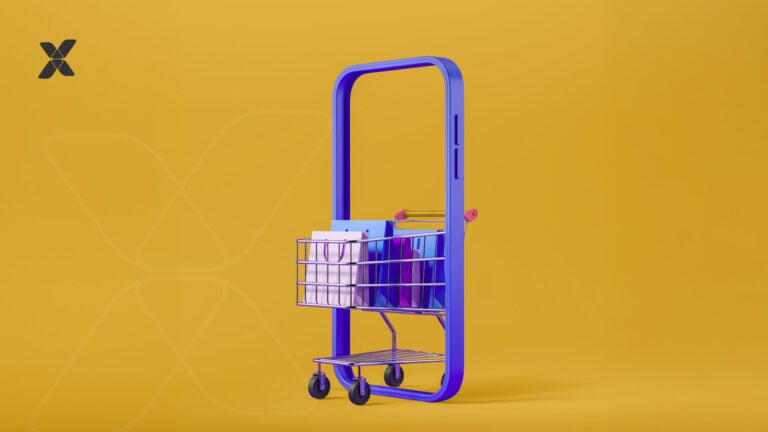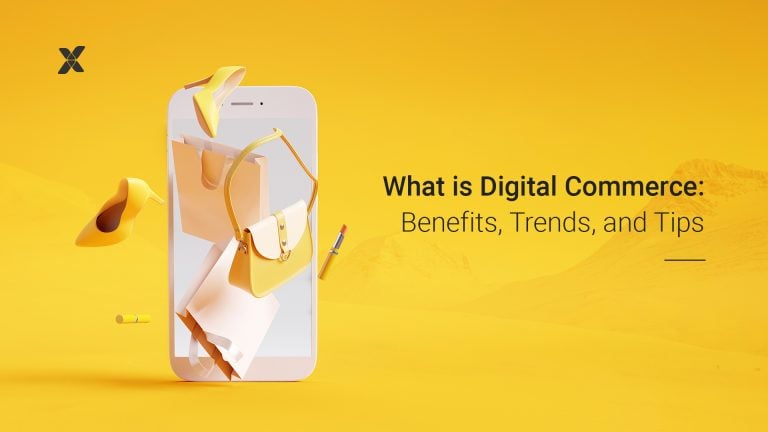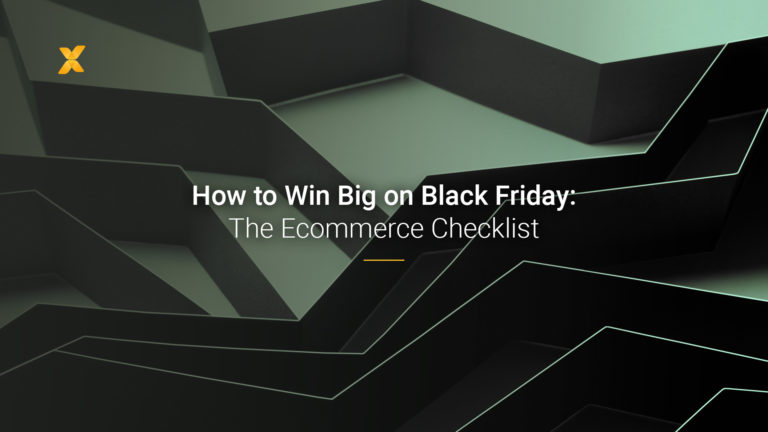Business to consumer (B2C) commerce is a long-standing pillar of humanity. Since the earliest stages of civilization, humans have bought and sold goods from one another. Whether directly or in marketplaces.
As humans create and use technology, it has arguably become much more sophisticated, but at its core is a business selling a product or service to a customer, usually through a storefront. Historically, B2C sales have always taken place in person. A customer walked into a grocery store and picked out a cereal box, or a person sat down in a restaurant and ordered a meal.
However, today, B2C commerce is taking place across an array of channels, adapting to an increasingly digital world.
For businesses already taking part in B2C or contemplating starting a B2C channel, the following guide will walk through the basic differences between B2C and B2B commerce business models, the reasons to consider a digital strategy for B2C commerce, the fundamentals of a strong B2C marketing strategy, and where future trends promise to take this industry.
Understanding the Difference Between B2C and B2B Commerce
In both B2C and B2B sales, the end goal is the same. A business is trying to sell a product or service to an end consumer. The subtle difference between the two lies in who the consumer is. In the case of B2B, the consumer is another business. For B2C sales, a customer is a person.
While this difference seems minor, the reality is that what drives an individual to make a purchase or choose a service is quite different from what motivates a business to make that same decision.
For B2B sales, the focus is generally on fact-based information and pricing. A business needs to know how the product being sold to them will meet their business objectives and not cut into their bottom line.
For B2C sales, the focus is on influencing an individual through emotion, personal beliefs, and brand engagement. That representation of “the better self.”
For example, Consumer Technographics data shows that nearly seven in ten US Millennials actively consider a company’s values when making a purchasing decision.
This difference in motivations behind purchases heavily influences how products and services are marketed and how brands can best reach their audience.
The Reasons to Go Digital with B2C Commerce
For businesses operating in the B2C commerce model, taking sales online is now the key to long-term success. If the past year taught us anything, it is that digital is the way of the future, and businesses that do not take their sales online will be left behind.
Customers Now Demand It
According to Statista, there are a projected 230.5 million online shoppers in the US. Though eCommerce has been in play since the 1990s, COVID-19 rapidly accelerated the adoption of digital shopping even further.
With consumers focused on staying safe, smart B2C businesses took their storefronts online. For companies that already offered digital sales, the past year has forced these companies to take a long hard look at how well optimized their online experience truly is.
Customers are not only flocking to the internet to make purchasing decisions, but they are demanding a better experience.
No matter how big or small your brand is, you are now competing against the expectations that retail giants, such as Amazon and Walmart, have created.
Geography is No Longer a Limitation
Switching to an online B2C strategy allows brands to expand their reach. Previously, businesses relied on the geographical locations of their brick-and-mortar storefronts to increase sales.
B2C eCommerce, conversely, is a global experience, allowing even small businesses to sell to customers across the world.
However, while global reach is a positive outcome of switching to an eCommerce-focused sales approach, B2C brands must be ready to handle this global market. Customers expect reliable online inventory, fast shipping options, and real-time package tracking, all from the comfort of home.
Retail Stores Are Shutting Their Doors
In 2020, 40 major retailers declared bankruptcy, and more than 11,000 stores shut their doors for good.
While the pandemic’s restrictions led to the demise of many stores, the reality is that any B2C business can benefit from shifting away from a brick-and-mortar-only focus to an online storefront.
Traditional storefronts come with high overhead costs. From rent and mortgage payments to staffing costs, many retail businesses can no longer bear the weight of these burdens.
Shifting to an eCommerce focus can help struggling brands regain their footing while reaching a larger customer base than before.
Strategies Can Be Backed by Real Data
Gathering data on your customers has never been easier than in today’s digital world. Tracking customers who walked into a physical location was difficult and very little meaningful data could be gathered from in-store interactions.
Ecommerce is the exact opposite. An online store allows brands to build out robust customer data sets, resulting in targeted audience segments. This can then feed into marketing strategies, product development, and brand positioning.
For example, if you knew that 85% of the customers who visit your online store also visit websites focused on environmental causes, you could make strategic decisions about your brand’s positioning in regards to climate change. You might even begin to offer products that donate a portion of proceeds to a leading environmental cause, all based on the data you gathered about your customer base’s behavior.
|
Would you like to learn more about this topic? |
The Fundamentals of B2C Marketing
For brands embarking on the B2C eCommerce journey, the right marketing strategy will be critical to the long-term success of all digital endeavors. At the core of B2C marketing are a few key fundamentals.
Personalization
Consumers have grown to expect an increasingly personalized approach to marketing. Whether it is a Facebook ad being surfaced or a suggested blog article emailed to a consumer’s mailbox, customers are accustomed to only seeing personally relevant content and information.
Brands must learn how to harness the power of data analysis to surface the right information to the right audience segments, or they will quickly be left behind.
A Unified Experience
From porch delivery of groceries to curbside pickup from restaurants, customers now expect a brand to be available across multiple channels.
Not only that, but consumers also expect these brands to offer a unified experience across each channel.
Whether they are interacting with your brand via online chat or placing an order through your company’s app, customers no longer consider eCommerce to only take place on a website.
More Content
The demand for content is growing. Today’s digital shopper is making decisions based on the content they see throughout their customer journey. For this reason, B2C brands must include a robust content strategy as part of their marketing tactics.
This content needs to be relevant, up-to-date and contextualize the experience. Not only is the need for more content increasing as consumers digest more and more digital content daily, but it also needs to span mediums.
For example, according to Google, more than half of shoppers say that an online video has influenced which brand or specific product they will buy.
Future Trends in B2C Marketing
While online shopping is not a new phenomenon, how customers make purchasing decisions is rapidly changing. The following future trends in B2C marketing will be critical for brands that wish to lead their industry.
Social Commerce
There is an increasing amount of focus placed on social channels for shopping, and the lines between social media and commerce are blending.
Take a look at the following stats:
- 81% of shoppers say that they research products on Instagram and Facebook before making a purchase.
- Generation Z spends 2-3 times more time shopping on social channels than the average consumer.
As younger generations take the lead in purchasing power, the need for a strong social media presence is a must. Not only that, but brands must also ensure that their social media strategy includes a unified commerce approach, allowing consumers to make purchases directly from any social platform.
Conversational Commerce
From ordering a refill of paper towels via Alexa to chatting with a sales member through an online chat about a particular dress color, conversational commerce is on the rise.
In fact, an incredible 60% of customers cite that they expect to be able to respond to SMS messages that they receive from a business.
While people might be spending less time in brick-and-mortar stores speaking to sales staff, the conversation has not stopped — it has simply moved to a digital space with technology and algorithms filling in for the person.
Shoppable Content
Another trend to pay attention to in B2C commerce is the demand for shoppable content.
According to a study by PopSugar, 67% of millennial women said they want to instantly purchase products they see in digital content, such as articles, photo galleries, or videos.
Creating shoppable content is critical for closing sales in a world where people are interacting with brands in a digital-first format.
Building a Digital Strategy for Your B2C Business
B2C commerce has been changing over the past decade, and 2020 only accelerated many of these shifts. For brands that sell products or services to individual consumers, building a digital strategy is no longer a backburner item. Rather, a digital strategy must be at the center of every business decision made.
At Vaimo, we help brands leverage the power of tools, such as Adobe Commerce and Adobe Experience Manager, to create a holistic digital commerce experience. We can assist businesses in bridging the gap between online channels, creating a truly unified experience for consumers. Not only that, but we also have expertise in measuring and adapting based on genuine consumer feedback.
If you are interested in taking your B2C digital strategy to the next level, reach out to our team to learn more about how we can help.








